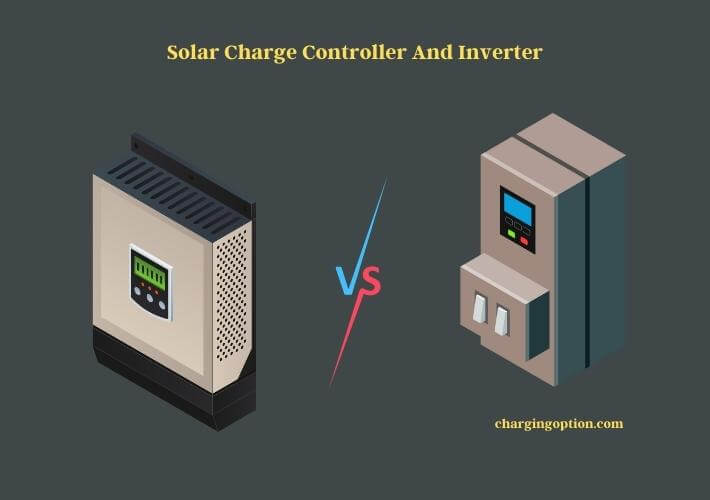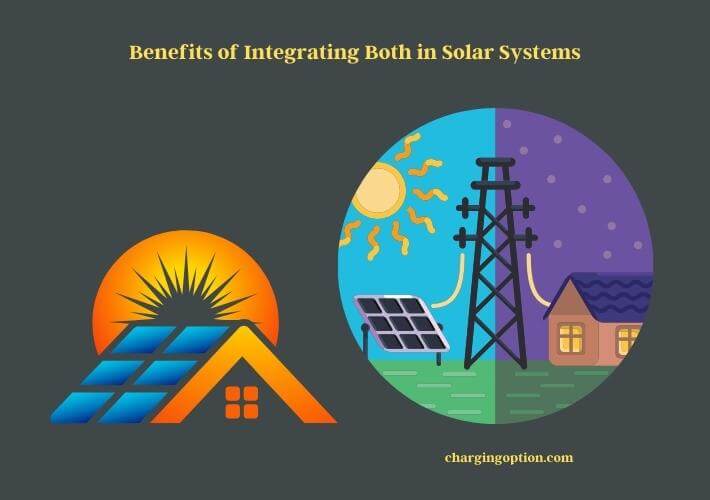Solar charge controllers and inverters serve distinct roles in a solar power system. While both are essential, they have different functions.
A solar charge controller is a device that manages the power going into the battery bank from the solar array. It ensures that the batteries do not overcharge and maintains their longevity. On the other hand, an inverter takes the direct current (DC) power stored in the batteries and converts it to alternating current (AC) power, which is the standard form of electricity used in most homes and businesses.
Many people wonder if they can connect an inverter directly to a charge controller. The answer is yes, but it’s crucial to ensure that the system is set up correctly. The inverter should be connected to the battery bank, and the charge controller should manage the power flow between the solar panels and the batteries.

Solar inverters come in various types, with some even having built-in MPPT (Maximum Power Point Tracking) charge controllers. These integrated systems can optimize the power conversion process, ensuring maximum efficiency. Inverter chargers are another variant that not only converts DC to AC but can also charge the battery bank from an AC source, like the grid or a generator.
In summary, while solar charge controllers and inverters have different roles, they work in tandem to harness solar energy efficiently and make it usable for everyday applications. Proper setup and understanding of their functions can optimize a solar power system’s performance.
Core Functions of Solar Equipment
Role of a Solar Charge Controller
So, what exactly does a solar charge controller do? In the simplest terms, it’s like a manager for your solar power system. It oversees the energy flowing from the solar panels to the batteries, making sure everything is in check. Too much power, and your batteries could be toast. Too little, and well, that’s a day without electricity. It’s all about that perfect balance, ensuring the batteries are charged efficiently and safely.
Purpose of an Inverter in Solar Systems
Now, let’s chat about the inverter. If the charge controller is the manager, think of the inverter as the translator. It takes the DC power stored in your batteries and turns it into AC power. Why is that cool? Because AC power is what most of our everyday appliances use. Without an inverter, that solar power isn’t as handy for lighting up your home or keeping your fridge cold.
Types of Solar Charge Controllers
PWM (Pulse Width Modulation) Controllers
Ever heard of PWM controllers? They’re like the old guards of solar charge controllers, reliable and tested. They manage the energy flow by switching the solar panel’s connection on and off, aiming for a balance that keeps your batteries charged but not overworked. It’s a simpler technology, but hey, it gets the job done and is easier on the wallet.
MPPT (Maximum Power Point Tracking) Controllers
Now, enter the MPPT controllers, the newer, fancier cousins. They’re all about efficiency, squeezing out as much power as possible from your solar panels. They adjust the voltage and current to get the maximum power output. It’s like having a personal trainer for your solar power system, pushing it to its full potential, ensuring no energy goes to waste.
Varieties of Solar Inverters
String Inverters
Imagine having one big translator for all your solar panels. That’s what a string inverter does. It takes the DC power from a series of panels and converts it into usable AC power. It’s a one-size-fits-all solution, making installation and maintenance straightforward. But remember, if one panel goes down, it affects the whole string.
Microinverters
Microinverters, on the other hand, are like having a personal translator for each panel. Every panel gets its own inverter, making the system more efficient and reducing the impact of a single panel going down. It’s a bit like having a team where each member focuses on their own task, ensuring the job gets done even if one calls in sick.
Hybrid Inverters
Hybrid inverters are the jack of all trades. They not only convert DC to AC power but also come with an integrated battery solution. It’s like having a translator and a storage unit all in one. They’re the go-to for people looking to store excess energy for those rainy days or evenings when the sun decides to call it a day early.
Key Differences Between Charge Controllers and Inverters
Operational Differences
| Function | Solar Charge Controller | Inverter |
| Primary Role | Manages power flow from panels to batteries | Converts DC to AC power |
| Complexity | Less complex, focuses on battery health | More complex, involves power conversion |
| Maintenance | Requires less maintenance | Needs regular checks for efficiency |
Charge controllers and inverters are like two sides of the same coin. One focuses on managing the flow of energy to the batteries, ensuring they’re neither overcharged nor undercharged. The other is all about converting that stored energy into a form that’s usable in our homes. It’s like having a diligent saver on one side and a skilled translator on the other.
Efficiency and Performance Metrics
| Metric | Solar Charge Controller | Inverter |
| Efficiency | Focuses on optimal charging | Centers on conversion efficiency |
| Performance | Measured by battery health | Gauged by conversion rate and quality |
While charge controllers are all about the health and longevity of batteries, inverters are judged by their ability to efficiently convert and deliver power. It’s akin to comparing a nutritionist who ensures you’re eating right, with a chef who makes sure that the food is prepared deliciously and presented appealingly.
Benefits of Integrating Both in Solar Systems

Enhanced Energy Management
With both a charge controller and an inverter, you’re looking at a dynamic duo that manages and converts your solar energy like pros. It’s like having a dream team that not only saves energy efficiently but also ensures it’s ready to use whenever you need it.
Prolonged System Lifespan
The combination ensures that each component is working optimally, reducing wear and tear. It’s akin to having a car with both an excellent engine and transmission. They work together to ensure a smooth, efficient ride, prolonging the vehicle’s lifespan.
Optimized Power Conversion
Having both means you’re getting the most out of your solar power system. It’s like squeezing every last drop of juice from a lemon. You’re not just storing energy efficiently; you’re converting and using it in the most effective way possible.
Potential Challenges and Solutions
Common Issues with Charge Controllers
Even the best managers face challenges, right? Charge controllers can sometimes struggle with efficiency issues or malfunctions. But not to worry, with regular checks and maintenance, these issues can be nipped in the bud, keeping your solar power system in tip-top shape.
Typical Inverter Challenges
Inverters aren’t without their quirks either. They can face issues with power conversion or system integration. But remember, knowledge is power. Being aware of potential problems and keeping an eye on system performance can make all the difference.
Best Practices for Troubleshooting
Facing issues with your solar equipment? Don’t fret. Regular maintenance, timely repairs, and upgrades can keep your system running smoothly. It’s like taking your car for regular servicing. A little attention can go a long way in preventing bigger issues down the line.
Real-world Applications and Case Studies
Residential Solar Installations
Ever wondered how these solar gadgets fare in real homes? Quite well, actually. Charge controllers and inverters are the unsung heroes in many residential solar installations, ensuring homes are powered efficiently and sustainably.
Commercial Solar Projects
In the corporate world, these devices are equally pivotal. They ensure that businesses not only save on energy costs but also reduce their carbon footprint. It’s a win-win, saving the planet while cutting down on expenses.
What Is the Ideal Distance Between a Solar Panel and Inverter?
The ideal distance between a solar panel and inverter depends on various factors such as cable length, voltage drop, and system efficiency. Proper distance management ensures optimal energy transfer and minimizes losses. Consulting with a professional can help determine the most suitable setup for your specific solar power system.
What Are the Main Differences Between the Anker 21W Solar Charger and Goal Zero?
The goal vs anker solar charger debate centers around the main differences between the two popular brands. While both offer solar charging solutions, Anker’s 21W Solar Charger boasts portability and efficiency, making it ideal for outdoor activities. On the other hand, Goal Zero offers a range of rugged yet powerful solar chargers that prioritize durability and longer battery life. Ultimately, the choice depends on individual preferences and specific needs.
Summary
Recap of Charge Controllers and Inverters
So, we’ve journeyed through the world of solar charge controllers and inverters, haven’t we? We’ve seen their roles, their strengths, and how they complement each other to make solar power a practical choice for both homes and businesses.
The Future of Solar Energy Management
Looking ahead, the synergy between charge controllers and inverters will only grow stronger. As technology advances, we can expect even more efficient and integrated solutions. Ready for a brighter, greener future? With these devices in play, it’s not just a dream but a rapidly approaching reality.
